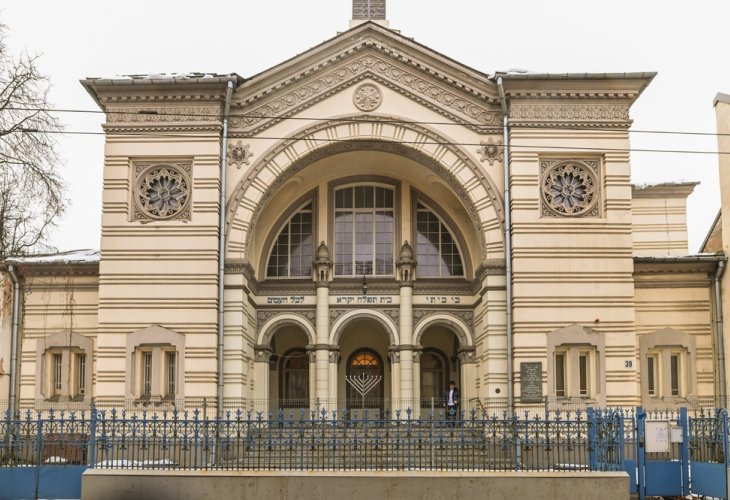A Cannonball on the Rooftop: The Curiosity of Vilnius' Grand Synagogue
Before World War II, the Great Synagogue of Vilnius featured a rather curious sight: a massive cannonball lodged into the roof. Despite its intimidating presence, this relic of war sparked more intrigue than fear. So, what was it doing there?
 The Great Synagogue of Vilnius (Photo: Shutterstock)
The Great Synagogue of Vilnius (Photo: Shutterstock)In these challenging times, as the grim reality of rockets fired into Israel becomes an unfortunate routine, we remind ourselves of the belief that everything is guided by Hashem. Thousands of rockets, countless soldiers, and innumerable armaments mark our reality. Yet, there's a sense that every bullet has a destination and a purpose. Amid such trials and tribulations, it is somewhat miraculous that hundreds of Iranian missiles have been intercepted, and even the Iranian president faced unforeseen consequences. We're not alone in this world.
Similarly, throughout the trials faced by Jews in the diaspora, there was an enduring belief that despite the hardships, they were never truly alone. Hashem intervenes in wondrous ways, by His own design, even if we don't always understand why some are saved and others, heartbreakingly, are not.
At the Great Synagogue of Vilnius, history bore witness to a fascinating spectacle that was visible until the devastation of the Holocaust: a gigantic cannonball, a leaden orb weighing hundreds of kilograms, was lodged firmly into the synagogue's roof. It was harmless now, yet its presence beckoned the question: Why was it there?
Back in 1795, the Russian Empire aimed to seize the city of Vilnius. Although the city was home to Polish citizens and had long been considered part of Poland, the Russians claimed otherwise. They set siege to Vilnius, building special towers for their cannons, and commenced a formidable bombardment, forcing the city to submit. The Jews, who remained neutral in the conflict, wished only for peace, but nobody sought their opinion. The Poles refused to surrender, making the city's inhabitants understandably anxious about becoming collateral damage.
In a tense standoff lasting thirty days, around the 17th of Tammuz, the Russians intensified their siege. On the 15th of Av, they began their bombardment. The Jews gathered in their synagogue for prayer and cries of desperation. The Gaon of Vilna, then an elderly sage (he would pass away three years later), led the prayers with the poignant verse "May Hashem answer you on the day of trouble." Just as these words echoed from the Gaon's mouth, an enormous cannonball struck the synagogue's roof. Panic and fear gripped the congregation, but the Gaon lifted his eyes from the prayer stand and assured them, 'The decree has been annulled.'
Indeed, following that moment, an eerie calm prevailed. The Russian army marched into the city accompanied by a parade of musicians. Control transferred peacefully into their hands without further destruction. Behind the scenes, a sensible Polish nobleman realized the city would be obliterated if Polish resolve persisted. He persuaded his peers to abandon their defiance, saving Vilnius' beautiful, ancient structures (evidently, safeguarding human lives seemed less paramount).
The cannonball remained in place until the tragedy of the Holocaust, which saw the synagogue obliterated. In recent years, the bimah and other fragments have been uncovered beneath a school, with ongoing efforts to preserve these remnants.

